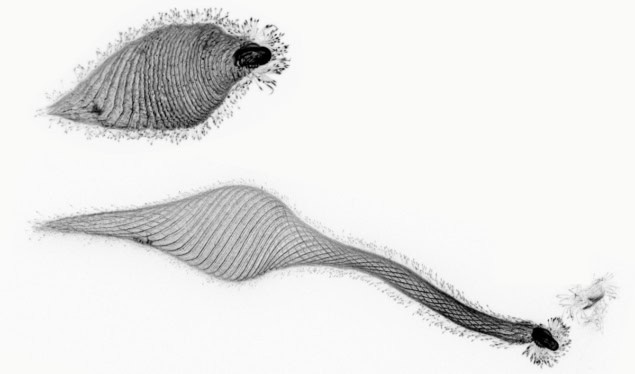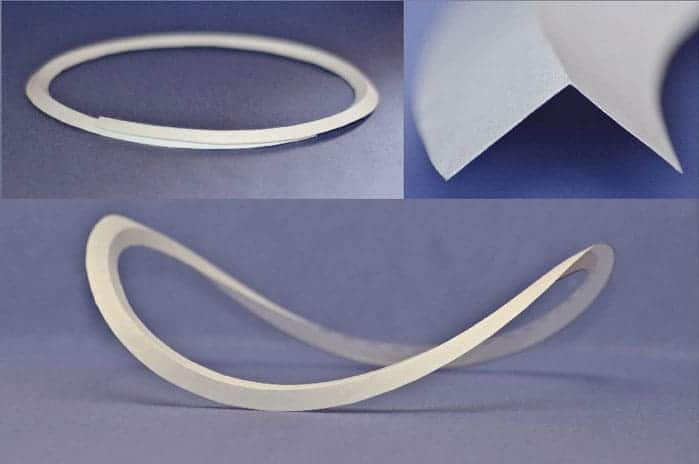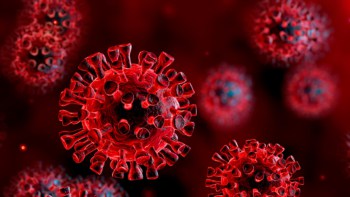
For the first time, two researchers in the US have observed the intricate folding and unfolding of “cellular origami”. Through detailed observations, Eliott Flaum and Manu Prakash at Stanford University discovered helical pleats in the membrane of a single-celled protist, which enable the organism to reversibly extend to over 30 times its own body length. The duo now hopes that the mechanism could inspire a new generation of advanced micro-robots.
A key principle in biology is that a species’ ability to survive is intrinsically linked with the physical structure of its body. One group of organisms where this link is still poorly understood are protists: single-celled organisms that have evolved to thrive in almost every ecological niche on the planet.
Although this extreme adaptability is known to stem from the staggering variety of shapes, sizes and structures found in protist cells, researchers are still uncertain as to how these structures have contributed to their evolutionary success.
In their study, reported in Science, Flaum and Prakash investigated a particularly striking feature found in a protist named Lacrymaria olor. Measuring 40 µm in length, this shapeshifting organism hunts its prey by launching a neck-like like feeding apparatus up to 1200 µm in less than 30 s. Afterwards, the protrusion retracts just as quickly: an action that can be repeated over 20,000 times throughout the cell’s lifetime.
Through a combination of high-resolution fluorescence and electron microscopy techniques, the duo found that this extension occurs through the folding and unfolding of an intricate helical structure in L. olor’s cytoskeleton membrane. These folds occur along bands of microtubule filaments embedded in the membrane, which group together to form accordion-like pleats.
Altogether, Flaum and Prakash found 15 of these pleats in L. olor’s membrane, which wrap around the cell in elegant helical ribs. The structure closely resembles “curved crease origami”, a subset of traditional origami in which folds follow complex curved paths instead of straight ones.
“When you store pleats on the helical angle in this way, you can store an infinite amount of material,” says Flaum in a press statement. “Biology has figured this out.”
“It is incredibly complex behaviour,” adds Prakash. “This is the first example of cellular origami. We’re thinking of calling it lacrygami.”
Perfection in projection
A further striking feature of L. olor’s folding mechanism is that the transition between its folded and unfolded states can happen thousands of times without making a single error: a feat that would be incredibly difficult to reproduce in any manmade mechanism with a similar level of intricacy.
To explore the transition in more detail, Flaum and Prakash investigated points of concentrated stress within the cell’s cytoskeleton. Named “topological singularities”, the positions of these points are intrinsically linked to the membrane’s helical geometry.
The duo discovered that L. olor’s transition is controlled by two types of singularity. The first of these is called a d-cone: a point where the cell’s surface develops a sharp, conical point due to the membrane bending and folding without stretching. Crucially, a d-cone can travel across the membrane in a neat line, and then return to its original position along the exact same path as the membrane folds and unfolds.
The second type of topological singularity is called a twist singularity, and occurs in the membrane’s microtubule filaments through their rotational deformation. Just like the d-cone, this singularity will travel along the filaments, then return to its original position as the cell folds and unfolds.

Physicists unfold the mechanics of origami
As Prakash explains, both singularities are key to understanding how L. olor’s transition is so consistent. “L. olor is bound by its geometry to fold and unfold in this particular way,” he says. “It unfolds and folds at this singularity every time, acting as a controller. This is the first time a geometric controller of behaviour has been described in a living cell.”
The researchers hope that their remarkable discovery could provide new inspiration for our own technology. By replicating L. olor’s cellular origami, it may be possible to design micro-scale machines whose movements are encoded into patterns of pleats and folds in their artificial membranes. If achieved, such structures could be suitable for a diverse range of applications: from miniature surgical robots to deployable habitats in space.



